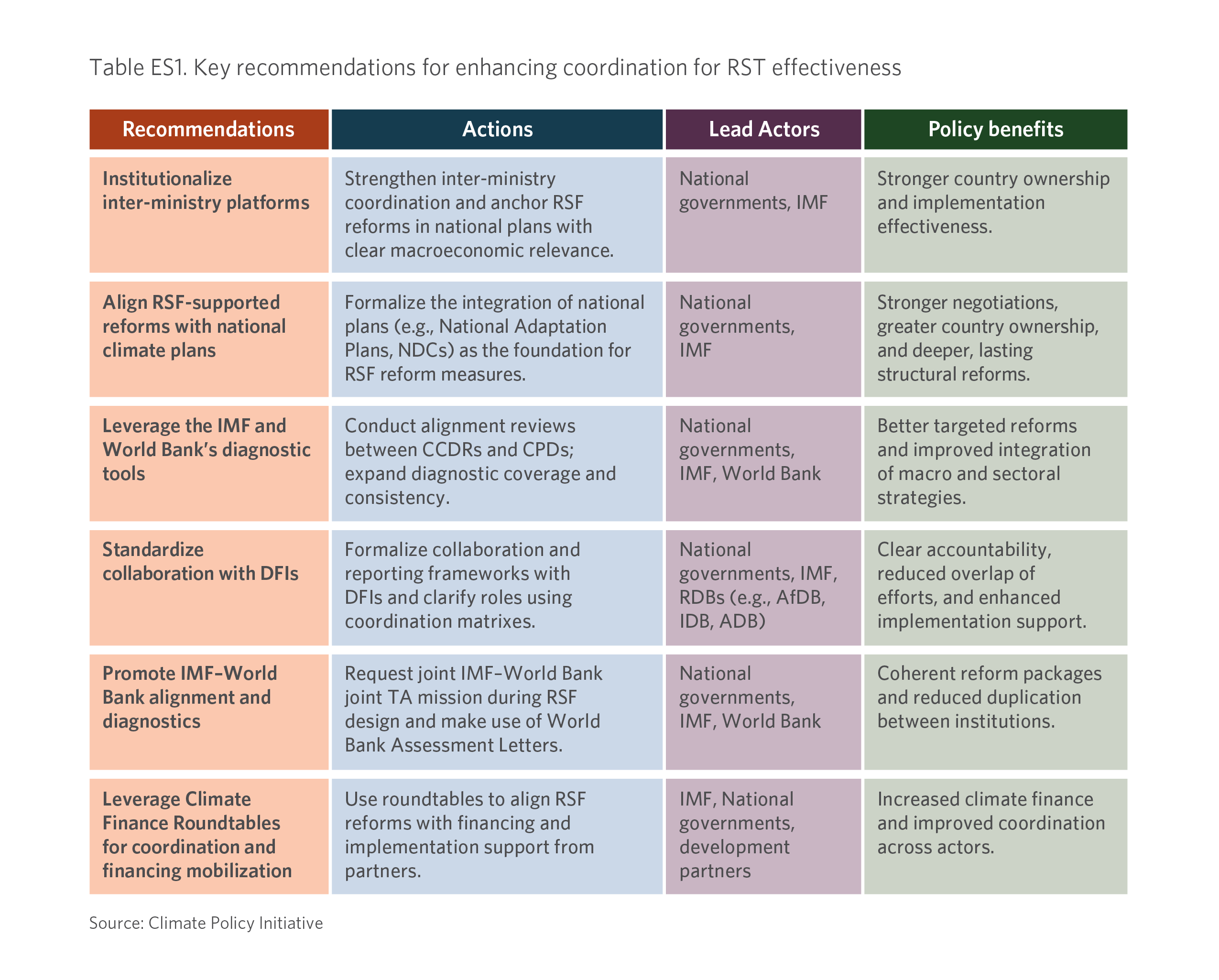Select language
Trends
Global Climate Reports
| Title |
[기타] Primer for Climate-related Engagement with the IMF |
|---|---|
| Category | |
|
Realizing the potential of the Resilience and Sustainability FacilityThe Resilience and Sustainability Trust (RST) of the International Monetary Fund (IMF) has the potential to help low- and middle-income countries (LMICs) enhance long-term economic resilience to climate change and other structural challenges. It was established in 2022 to help countries integrate climate considerations into their macroeconomic policies and create an enabling environment for the mobilization of climate finance. The RST’s operational arm—the Resilience and Sustainability Facility (RSF)—provides affordable, long-term loans to help countries strengthen fiscal buffers and make structural reforms that advance the RST’s objectives.
This primer has three objectives:
By providing guidance on improving these coordination mechanisms, this paper aims to empower recipient countries to leverage their engagement with the RSF to implement macroeconomic policy frameworks that are truly suited to addressing climate change. This study focuses on a critical but often overlooked question: How can effective stakeholder coordination improve RSF implementation and impact? KEY FINDINGS ON COORDINATIONNATIONAL AUTHORITIESStronger engagement between finance ministries, sectoral ministries, and the RSF can maximize its impact. While the IMF primarily engages with finance ministries and central banks, RSF programs require collaboration across sectoral ministries to integrate climate risks and goals into macroeconomic reforms. However, misalignment with national climate plans, limited sectoral ministry involvement, and overlapping climate initiatives can impede RSF implementation. Governments can use the following engagement tools to help address these challenges:
DEVELOPMENT PARTNERSStronger collaboration among the RSF, World Bank, regional development banks (RDBs), and bilateral development finance institutions (DFIs) can increase program impacts. These development partners support RSF design and implementation by (1) providing complementary sectoral expertise, (2) capacity building, and (3) financing for long-term climate projects. However, inconsistent coordination, weak engagement with RDBs, and uneven implementation of the World Bank-IMF Enhanced Framework—particularly in the use of joint diagnostic tools—hinder RSF implementation. To address these challenges:
CATALYZING CLIMATE FINANCEThe IMF can mobilize climate finance through two key channels: (1) Macro-critical climate reforms and (2) IMF Climate Finance Roundtables. By helping countries to integrate climate risks into fiscal planning, public financial management, and financial sector resilience, the RSF improves investment conditions and catalyzes private sector participation. It also leverages the IMF’s convening power through Climate Finance Roundtables, which provide a platform for governments, development partners, and private actors to align investments with national priorities to scale up climate finance. However, the following challenges limit its effectiveness:
To maximize the RSF’s catalytic role, the IMF, national governments, and development partners should leverage Climate Finance Roundtables by adopting structured approaches to coordination financing mobilization and long-term institutionalization. Case studies from Barbados, Bangladesh, and Rwanda demonstrate how improved coordination can attract additional financing from multilateral development banks, the Green Climate Fund, and private investors.
|
|
| File | |
| Sources | CPI/Resocrces/Publication |
| View Original URL | |
| Prev | [SEI] Knowledge base for Norad’s clean energy portfolio |
|---|---|
| Next | [기타] European State of the Climate 2024 |







